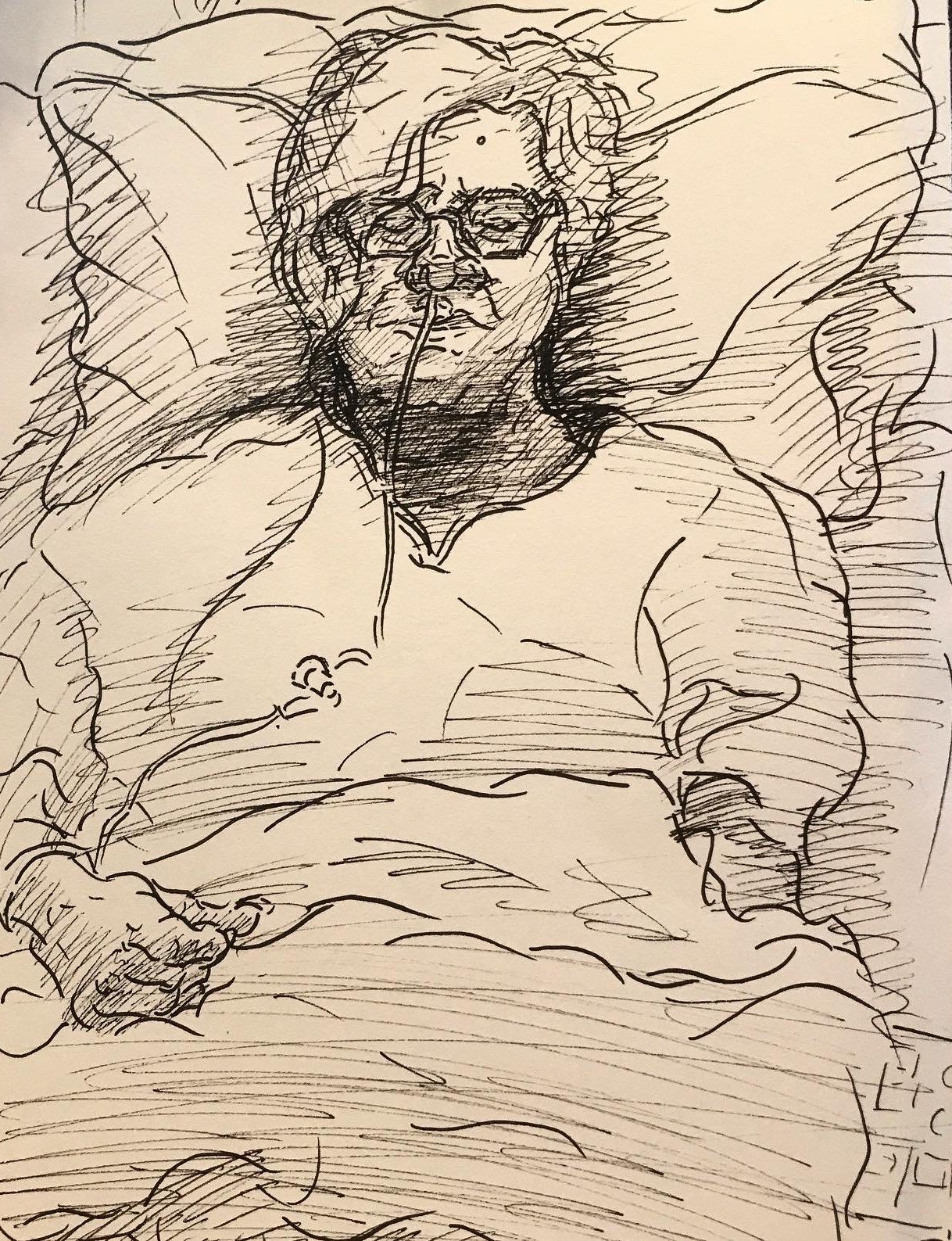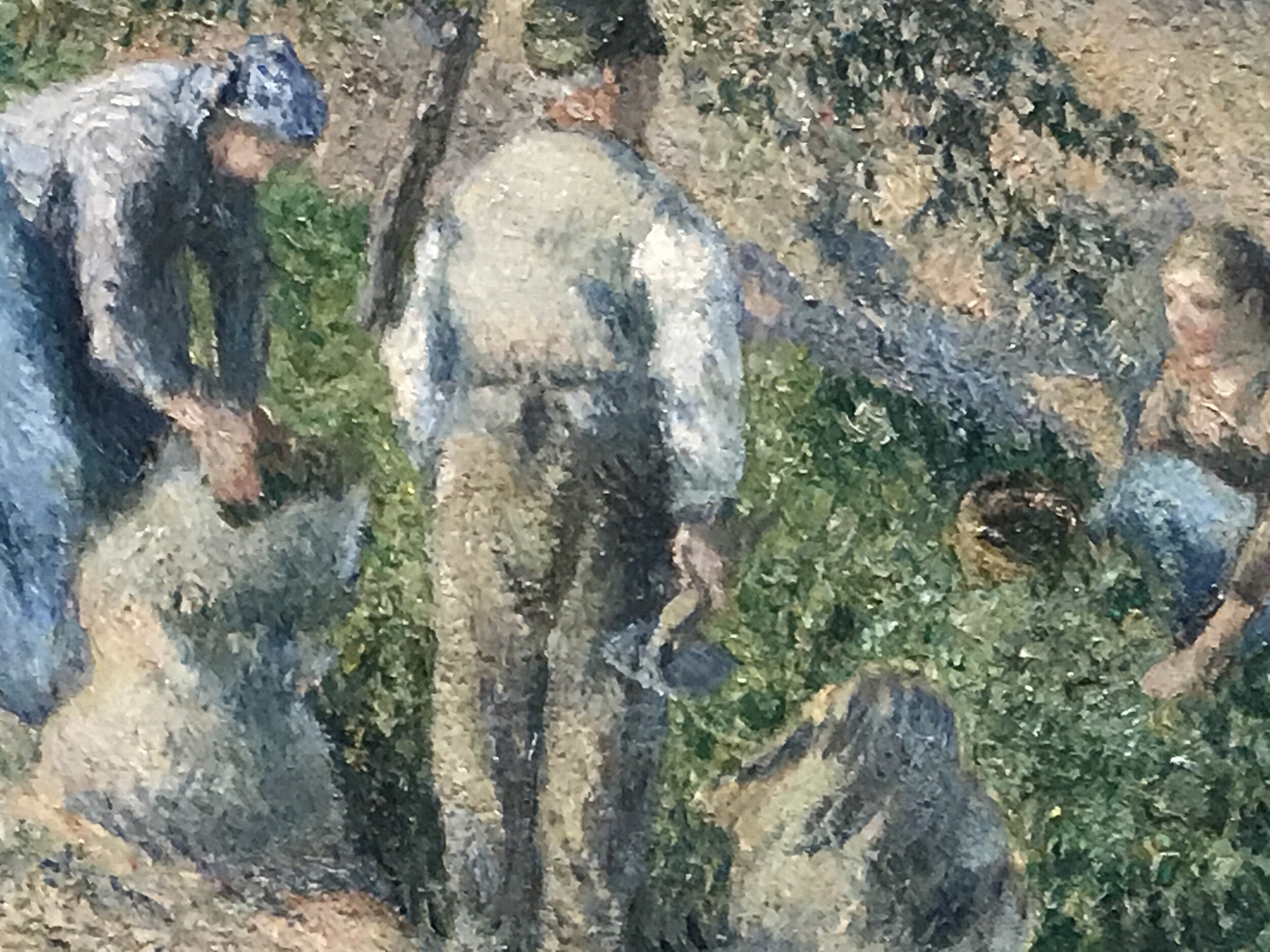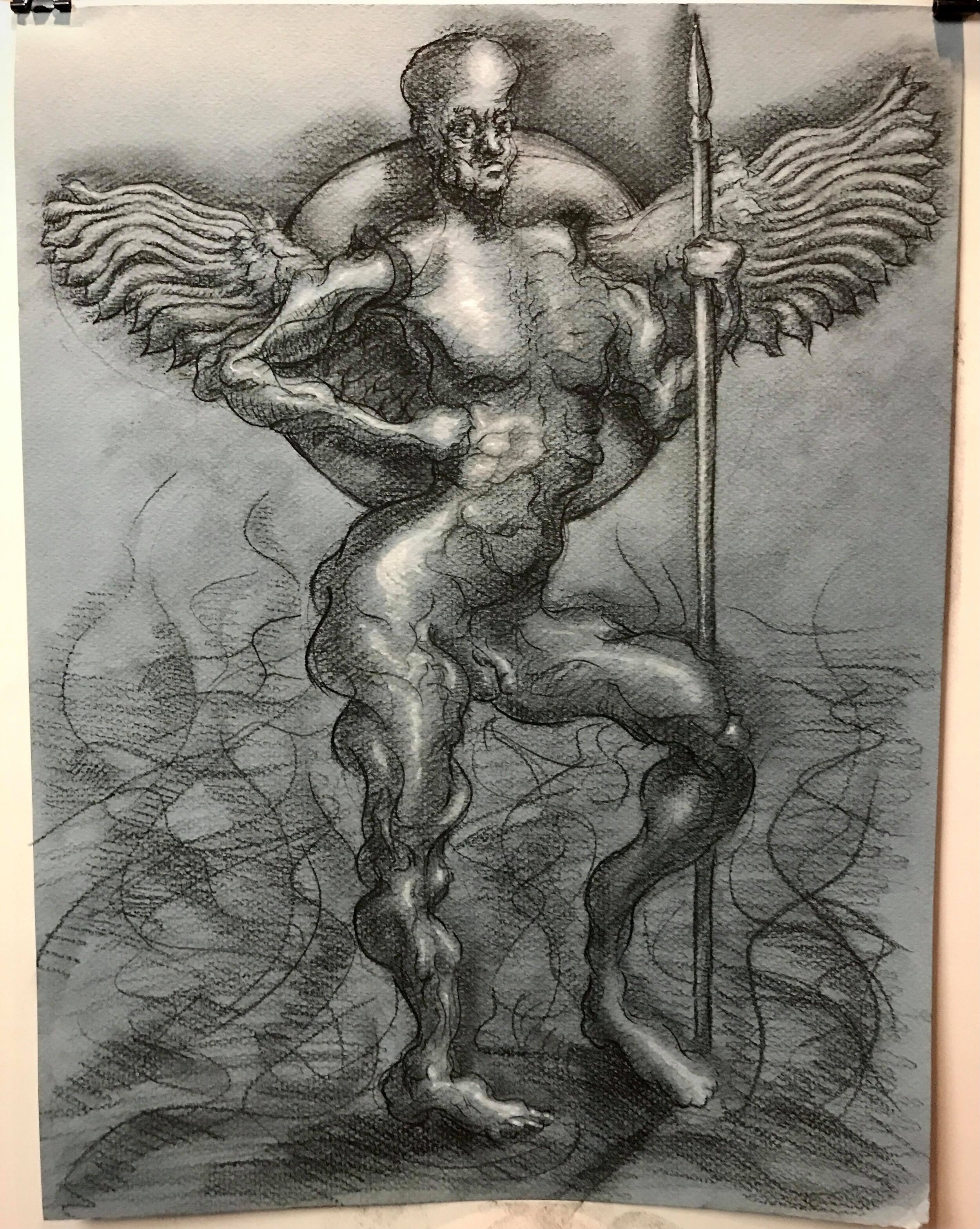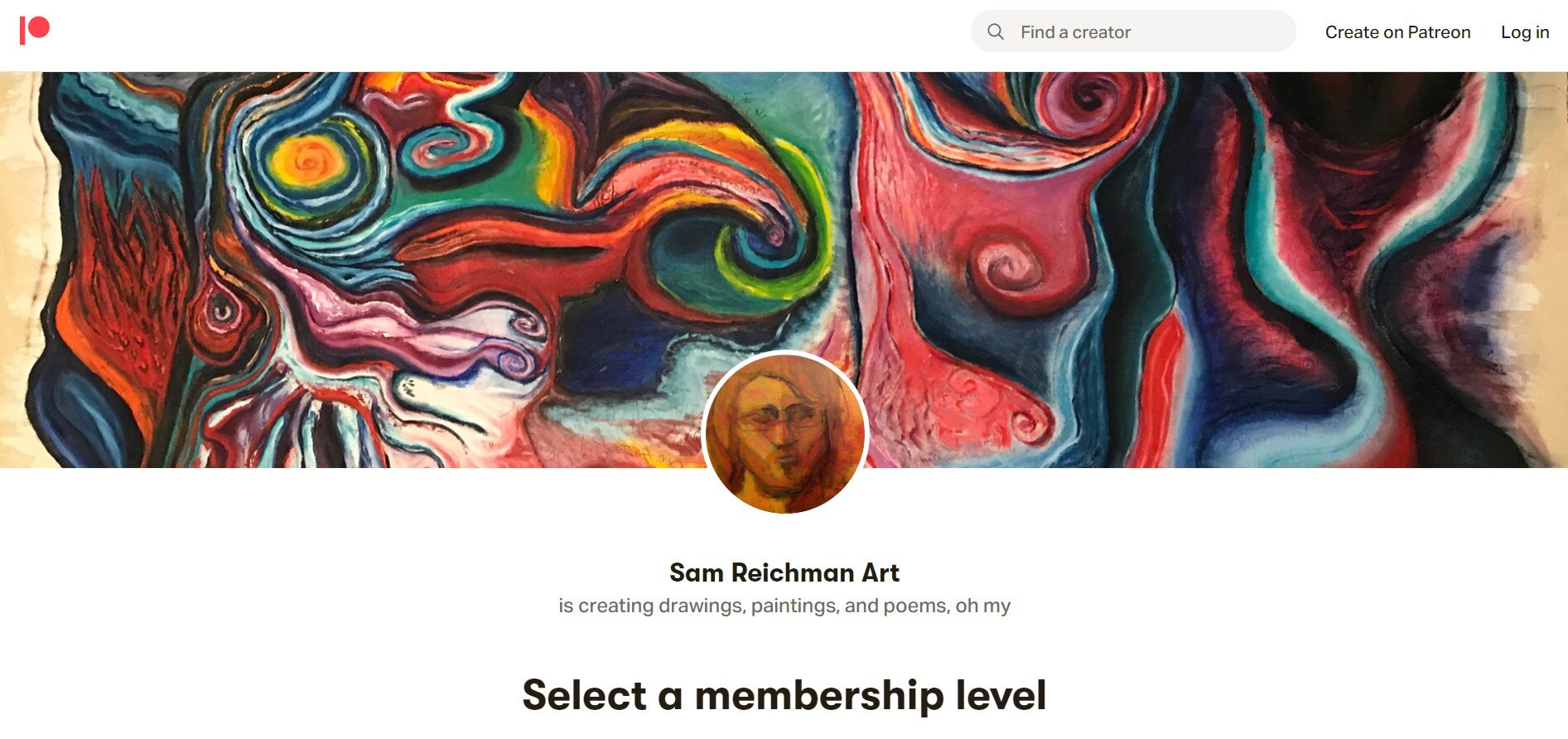Hi y’all,
Welcome back to the blog! A very belated happy new year to you all. It’s been a while since my last post—things got crazy with the holidays, new job/s, and my teaching schedule—but I’m back!
First, I’ve got two happy announcements to share. One is that I made my first sale on Saatchi since I started using it last spring. For those of you who don’t know, Saatchi is the world’s largest online gallery. Here’s the lucky winner:
“Guarded Sunset” - 12’’ x 12’’ - oil on canvas
It found a home with a collector in Boulder, about 30 minutes north of us in Denver. In case you, dear reader, are interested in a piece yourself, feel free to check out my Saatchi page, shoot me an email to inquire about a piece or a commission, or peruse the Shop & Learn tab for more goodies.
The second piece of good news is that I have an interview out with VoyageDenver, a magazine that tells the stories of local creatives and entrepreneurs. We talked craft, how I got into the arts, challenges I’ve faced, plans for the future, and more! You can check out the interview here.
Now for the good (read: nerdy) stuff. Since the weather has gotten cold and snowy, I’ve been back in the home studio. If I can work up the nerve/buy finger warmers, I might do a winter plein air piece or two, buuut for now I’m staying inside.
As a result, I’ve turned my attention back to the Paradise Lost illustration project. In case you don’t remember, I left off with a few studies of Satan from Book I, where he and the other rebellious angels have recently been cast into hell.
I started off with a conte and gouache drawing:
Study of Satan, Paradise Lost, Book I - 16’’ x 12’’ conte and gouache on paper
then did a study on Procreate, where I though through some of the color problems:
Color study of Satan, Paradise Lost, Book I - Procreate
and now, finally, I’ve finished the full oil painting:
Satan Stands to Address His Legions, Paradise Lost, Book I - 30’’ x 24’’ - oil on canvas
One of my main challenges in this painting was staying true to the textual references, which are… tricky. Milton describes hell as being a “dungeon horrible” surrounded by a great, fiery furnace with flames that cast “[n]o light, but rather darkness visible”. Satan also walks on “burning marl” (a kind of stone). So… how does one create flames that cast no light? And how do stones burn without casting light? And how exactly are we supposed to see Satan if there’s no light shining on him?
For those of you who aren’t big painting nerds, rendering an object (i.e., making it look three dimensional) with no light source is… basically impossible. It kind of defies the laws of physics. To get around that, I decided that, given his recent fall (and God’s omniscience in the epic), we could afford a little bit of light from heaven still shining down on him—a way for God to keep an eye on the tricky rebel and for me to solve my physics problem. Thus the light source at the top. This also allowed to me basically ignore whatever light the ‘burning marl’ might’ve cast.
As for the lightless flames, I started off the painting with a relatively dark background, which allowed me to make bits of pure, saturated color pop while keeping their value low (that is, make sure they stayed pretty dark too). I later toned down the background, but I’m pretty happy with the ‘lightless flames’ that poked through in the end. Here’s an early stage of the painting for comparison:
Early stage of the Satan painting
One of my other main challenges was showing Satan’s corruption through the chaos in the warms and cools. As I articulated in an earlier post, I’ve decided to show the level of an angel’s (or demon’s) corruption through the contradictions in their colors. From a distance, the Satan painting may look fairly unified, but when you get closer, you can see the warms and cools knocking against each other:
All this angel painting got me thinking… Milton says angels look this way, but what about the source material—that is, the Bible? Well, that and watching Midnight Mass on Netflix, which I totally recommend.
Turns out, it says some pretty weird stuff. After a little Googling, I found that one of the main sources of Biblical imagery comes from Ezekiel I. Ezekiel sees the heavens open up and has “visions of God”—and, rabbis and theologians have inferred, angels. But they’re not exactly the winged, Cupid-like version we’ve grown so accustomed to.
Instead, some are made of two intersecting wheels, “sparkling like topaz”, and covered in eyes. Yep, you read that right: shiny wheel eyes. That’s what angels look like. According to Maimonides, a prominent Medieval Jewish scholar and philosopher, this was actually the highest rank of angels. Here’s a quick study I worked up for them:
Study for Ezekiel’s vision - pen and ink on paper
And it only gets stranger from there. The other angels — believed to be cherubim — are a hodgepodge of humans and various animals. They have four wings, two of which cover their bodies; the other two face upwards above them. Under these wings, “on all four sides”, they have human hands. Their legs are straight and human, but their feet look “like those of a calf” and gleam “like burnished bronze.”
Perhaps the strangest part of the cherubim are their heads. Heads, plural—four, to be exact. One, facing left, is an ox head. Another, facing right, is a lion head. The other two heads are human and eagle. Ezekiel doesn’t specify where they sit in relation to each other.
This got me thinking, so I started on some studies of the animal heads and working through some of the perspective problems.
Perspective and animal studies for Ezekiel’s vision - pen and ink on paper
As you can see in my notes in the upper left, Ezekiel’s vague description of the eagle and human head create an interesting problem. If they have “four sides,” as Ezekiel mentions when describing the position of their hands and wings, and if we presume that each side gets one head and one head only, then how exactly is Ezekiel able to see all four heads at once? Shouldn’t one be facing away from him?
It’s almost as if Ezekiel is seeing multiple perspectives at once. You know, the core ingredient in Cubism? Maybe Picasso wasn’t such an innovative genius and more of a Biblical scholar. Or maybe there’s a translation issue, or the Bible just isn’t meant to be taken so literally . . .
At any rate, it’s been a fun issue to think through! To do so, I came up with a line drawing/cartoon:
Cherub from Ezekiel’s vision, study - pen and ink on paper
In conclusion, the Bible is the best source of surrealist and modernist imagery. Thank you for coming to my Ted Talk.
Alright, that’s it for this post! Thanks for reading, and keep creating!




































































